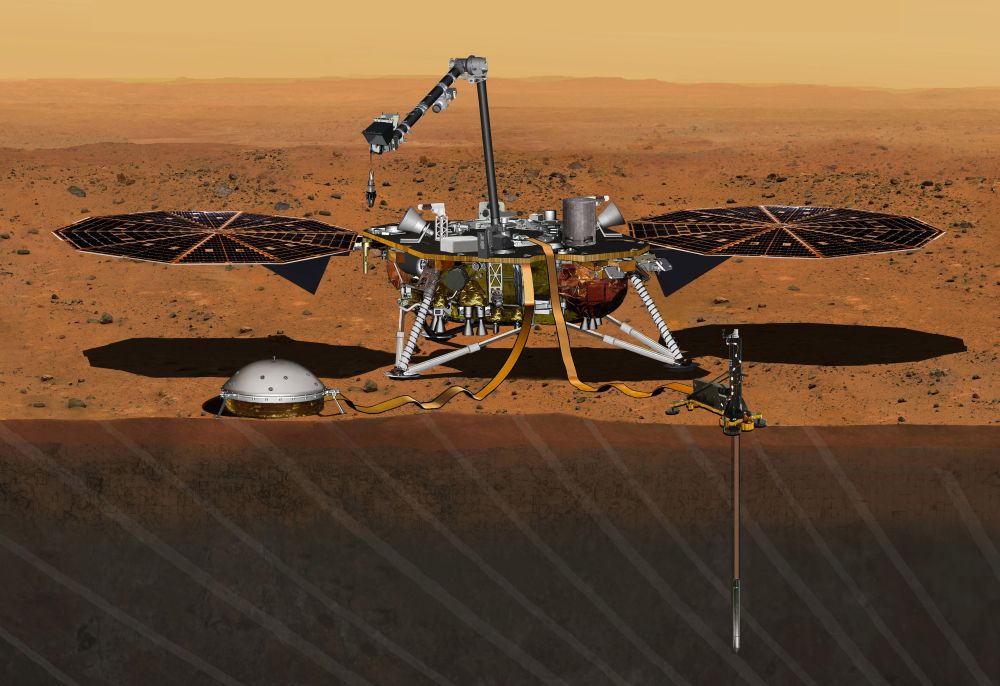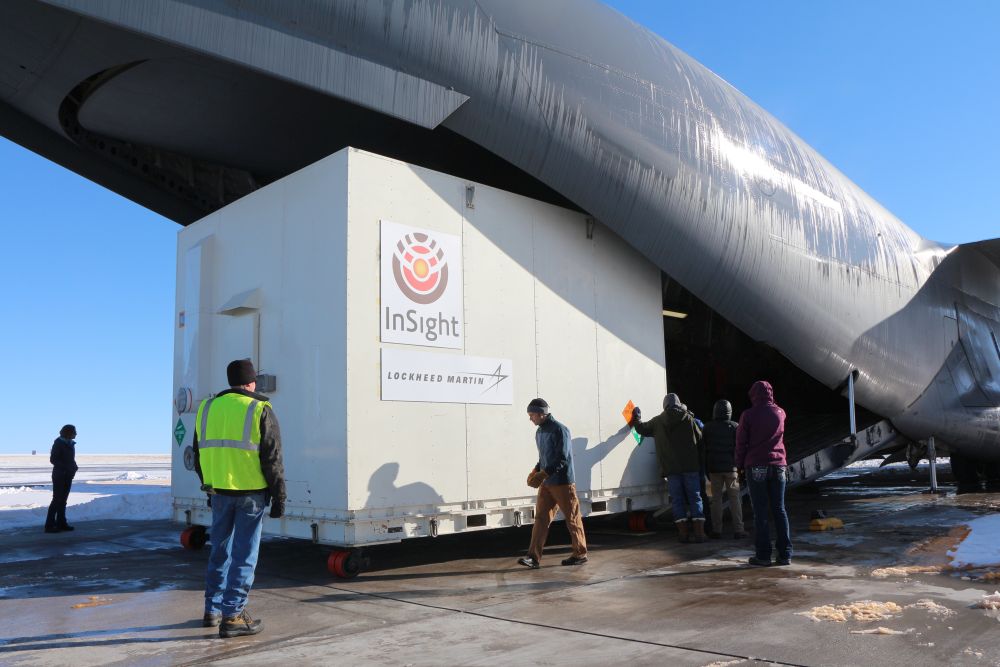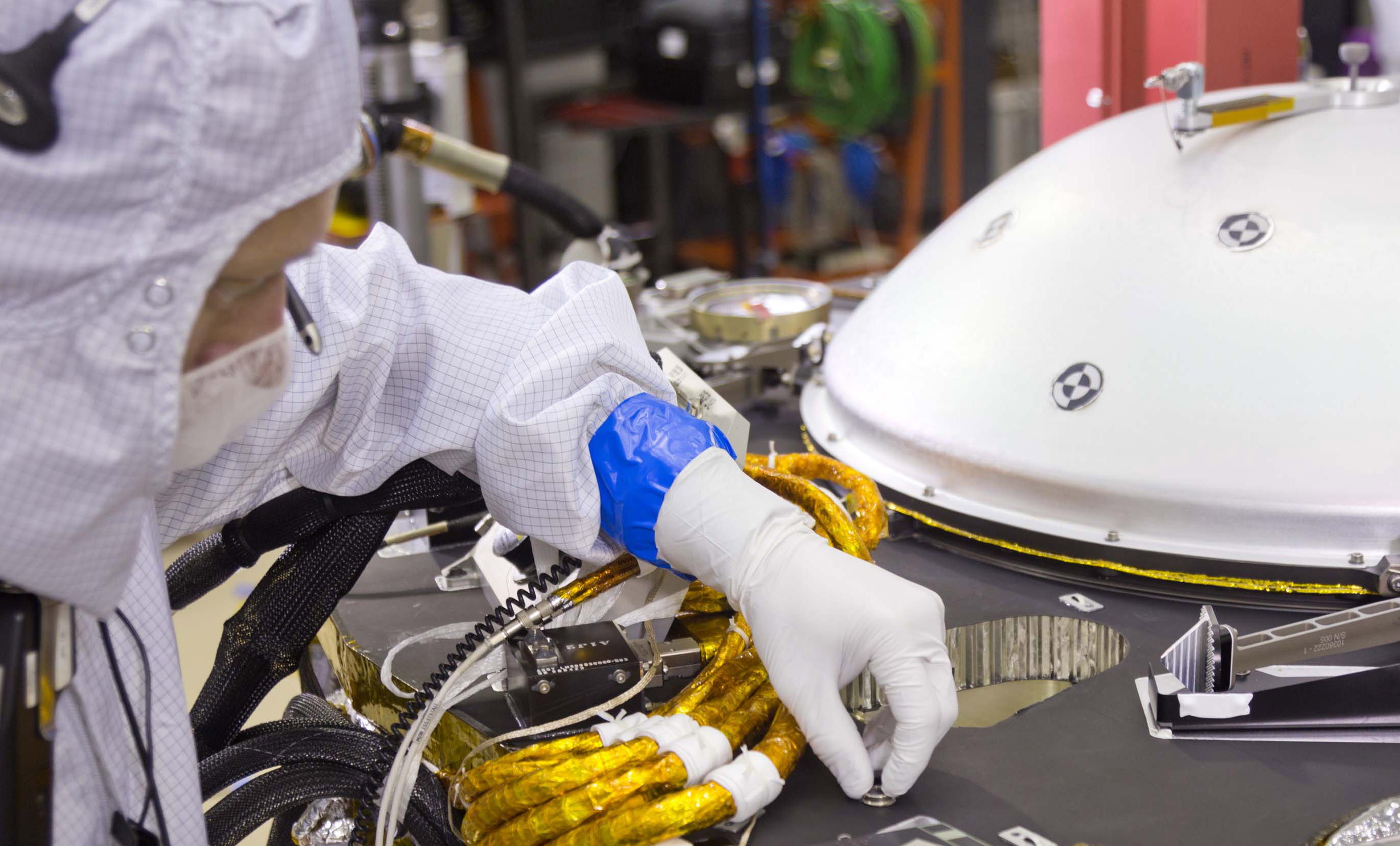
In December, those following the Interior Exploration using Seismic Investigations, Geodesy and Heat Transport (InSight) mission, planned to launch on a trek to Mars this month aboard a ULA Atlas-V launch vehicle, were disappointed when it was announced that the mission would be suspended due to a vacuum leak in a critical science component. However, disappointment turned into hope today as NASA announced that a new launch date around May 5, 2018, is being targeted, with landing intended to occur on or around Nov. 26, 2018. No official launch window has been stated at present time.
Officials with NASA and France’s space agency, Centre National d’Études Spatiales (CNES), were briefed by the mission’s project managers concerning the status of the mission; an agreement to redesign the affected instrument, the Seismic Experiment for Interior Structure (SEIS), was proposed and accepted. Since windows for Mars missions open every 26 months due to the planets’ positions, the earliest time for launch falls in Spring 2018.
It was hoped previously that the instrument could be repaired in time for a 2016 launch, but this was not meant to be. An article published on Dec. 7, 2015, stated: “The lander itself has already completed construction and testing at Lockheed Martin Space Systems in Colorado. It is now being prepared for shipment to the launch site at Vandenberg AFB. The rest of the payload, including the Heat Flow and Physical Properties Package (HP3) from Germany, has already been installed on the spacecraft. At this time, it seems that InSight is still on schedule for launch next March, and NASA and CNES managers are assessing the launch timeline.” By Dec. 23 it was announced the mission was suspended: “The lander will now be returned to the Lockheed Martin facility in Denver.” InSight is currently in storage at that facility until mission preparations resume in 2017.
The SEIS is a seismometer described as being sensitive enough to detect ground movements as small as half the radius of a hydrogen atom. A vacuum leak had developed in the SEIS’ vacuum container, compromising the instrument’s integrity; if launched with this leak, the mission would not meet its science objectives. According to NASA, the InSight lander is meant to investigate Mars in a bid to further understand how “rocky” planets formed and evolved. Instead of looking at Mars’ surface features, InSight will look further “into” our neighboring planet, investigating its interior using instruments including (but not limited to) a heat flow probe and the all-important seismometer. In a sense, InSight will perform a geological survey.

Today, NASA related that the Jet Propulsion Laboratory (JPL) in Pasadena, Calif., will “redesign, build and conduct qualifications” of the SEIS’s new vacuum enclosure, while CNES has agreed to “lead instrument level integration and test activities.” The agency also reported the two agencies will meet within the next six months to reassess progress. At present time, costs for this redesign have not been announced, with NASA only stating, “An estimate is expected in August, once arrangements with the launch vehicle provider have been made.”
While those following InSight were displeased with December’s announcement, this is definitely not the first time a planetary mission has been delayed following a major system or instrument redesign, or a change in plans. NASA’s Jim Green, director of the Planetary Science Division in Washington, D.C., underscored at that time, “In 2008, we made a difficult, but correct decision to postpone the launch of the Mars Science Laboratory mission for two years to better ensure mission success. The successes of that mission’s rover, Curiosity, have vastly outweighed any disappointment about that delay.” The Curiosity rover continues to send data about the Martian surface back to Earth, and vivid images detailing the incredible Gale Crater.
Both NASA and CNES officials were adamant that InSight, despite its recent setback, would get “back on track.” NASA’s John Grunsfeld, the agency’s associate administrator for the Science Mission Directorate in Washington, D.C., enthused: “The science goals of InSight are compelling, and the NASA and CNES plans to overcome the technical challenges are sound. The quest to understand the interior of Mars has been a longstanding goal of planetary scientists for decades. We’re excited to be back on the path for a launch, now in 2018.”
CNES’ Marc Pircher, director of the Toulouse Space Centre, added, “The shared and renewed commitment to this mission continues our collaboration to find clues in the heart of Mars about the early evolution of our solar system.” Pircher is in part referring to InSight’s heavy international influence, with components designed and built by various European nations, and JPL. InSight’s principal investigator is Bruce Banerdt at NASA’s JPL.
Mars is not only InSight’s “target,” but continues to be the focus of many international projects. While NASA is currently designing the Orion Multi-Purpose Crew Vehicle (MPCV) and its launch vehicle, the heavy-lift Space Launch System (SLS), in a bid to bring humans closer to a “Mission to Mars,” robotic missions continue on and around the Red Planet. As mentioned previously, Curiosity continues its trek at Gale Crater, while incredibly the Opportunity rover keeps on trucking well after a decade of operation (its intended lifetime was only 90 days). The United States has a rich heritage of Mars missions, beginning with the Mariner program in the 1960s.

In addition, the Mars Reconnaissance Orbiter (MRO), the Mars Atmosphere and Volatile EvolutioN Mission (MAVEN) orbiter, Mars Odyssey, ESA’s Mars Express, and India’s Mars Orbiter Mission are all currently active. Next week, on March 14, an ESA/Roscosmos collaboration, the ExoMars Trace Gas Orbiter (TGO) will launch from Baikonur. It will arrive at Mars in October, and deploy a small lander. While NASA’s Mars 2020 rover continues to be designed, the agency’s next lander, InSight, will show a whole new “side” of Mars once it overcomes its recent bump in the road.
Be sure to “Like” AmericaSpace on Facebook and follow us on Twitter: @AmericaSpace
.
Missions » InSight »





“Insightful” decision – good!